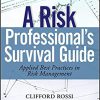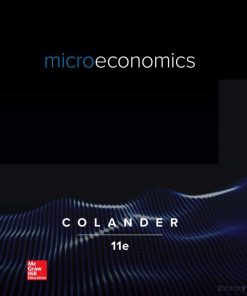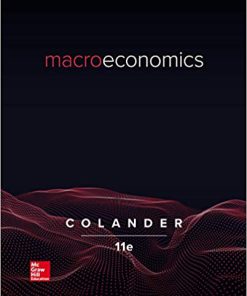(eBook PDF) Economics 10th Edition by David Colander
$50.00 Original price was: $50.00.$35.00Current price is: $35.00.
(eBook PDF) Economics 10th Edition by David Colander – Instant Download
(eBook PDF) Economics 10th Edition by David Colander – Digital Ebook – Instant Delivery Download

product details:
- ISBN-10 : 1259193152
- ISBN-13 : 978-1259193156
- Author: David Colander
Colander’s Economics 10e is specifically designed to help today’s students succeed in the principles of economics course and grasp economic concepts they can apply in their daily lives. Colander’s trademark colloquial approach focuses on modern economics, institutions, history, and modeling, and is organized around learning objectives to make it easier for students to understand the material and for instructors to build assignments within Connect. Through Connect and Smartbook students will find engaging activities, helpful tutorial videos, and learning resources at that moment of need.
Connect is the only integrated learning system that empowers students by continuously adapting to deliver precisely what they need, when they need it, and how they need it, so that your class time is more engaging and effective.
table of contents:
PART I INTRODUCTION: THINKING LIKE AN ECONOMIST
1 Economics and Economic Reasoning
2 The Production Possibility Model, Trade, and Globalization
Appendix: Graphish: The Language of Graphs
3 Economic Institutions
Appendix: The History of Economic Systems
4 Supply and Demand
5 Using Supply and Demand
Appendix: Algebraic Representation of Supply, Demand, and Equilibrium
PART II MICROECONOMICS
I THE POWER OF TRADITIONAL ECONOMIC MODELS
6 Describing Supply and Demand: Elasticities
7 Taxation and Government Intervention
8 Market Failure versus Government Failure
8W Politics and Economics: The Case of Agricultural Markets
II INTERNATIONAL ECONOMIC POLICY ISSUES
9 Comparative Advantage, Exchange Rates, and Globalization
10 International Trade Policy
III PRODUCTION AND COST ANALYSIS
11 Production and Cost Analysis I
12 Production and Cost Analysis II
Appendix: Isocost/Isoquant Analysis
IV MARKET STRUCTURE
13 Perfect Competition
14 Monopoly and Monopolistic Competition
Appendix: The Algebra of Competitive and Monopolistic Firms
15 Oligopoly and Antitrust Policy
16 Real-World Competition and Technology
V FACTOR MARKETS
17 Work and the Labor Market
Appendix: Derived Demand
17W Nonwage and Asset Income: Rents, Profits, and Interest
18 Who Gets What? The Distribution of Income
VI CHOICE AND DECISION MAKING
19 The Logic of Individual Choice: The Foundation of Supply and Demand
Appendix: Indifference Curve Analysis
20 Game Theory, Strategic Decision Making, and Behavioral Economics
Appendix: Game Theory and Oligopoly
VII MODERN ECONOMIC THINKING
21 Thinking Like a Modern Economist
22 Behavioral Economics and Modern Economic Policy
23 Microeconomic Policy, Economic Reasoning, and Beyond
PART III MACROECONOMICS
I MACROECONOMIC BASICS
24 Economic Growth, Business Cycles, and Unemployment
25 Measuring and Describing the Aggregate Economy
II POLICY MODELS
26 The Keynesian Short-Run Policy Model: Demand-Side Policies
26W The Multiplier Model
27 The Classical Long-Run Policy Model: Growth and Supply-Side Policies
III FINANCE, MONEY, AND THE ECONOMY
28 The Financial Sector and the Economy
Appendix: A Closer Look at Financial Assets and Liabilities
29 Monetary Policy
30 Financial Crises, Panics, and Unconventional Monetary Policy
IV TAXES, BUDGETS, AND FISCAL POLICY
31 Deficits and Debt: The Austerity Debate
32 The Fiscal Policy Dilemma
V MACROECONOMIC PROBLEMS
33 Jobs and Unemployment
34 Inflation, Deflation, and Macro Policy
VI INTERNATIONAL MACROECONOMIC POLICY ISSUES
35 International Financial Policy
Appendix: History of Exchange Rate Systems
36 Macro Policy in a Global Setting
37 Structural Stagnation and Globalization
Appendix: Creating a Targeted Safety Net to Help Least Well Off
38 Macro Policy in Developing Countries
people also search:
You may also like…
Business & Economics
Business & Economics - Economics
Microeconomics, 11e 11th Edition David C. Colander – eBook PDF
Business & Economics











